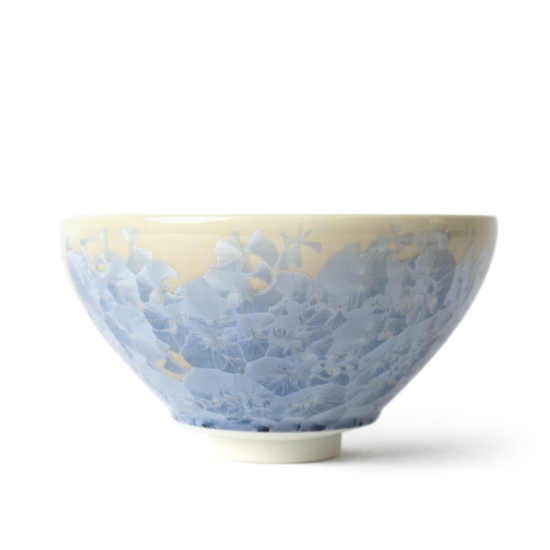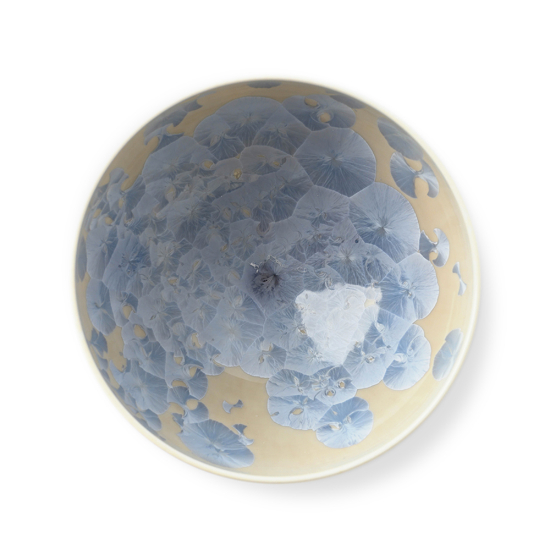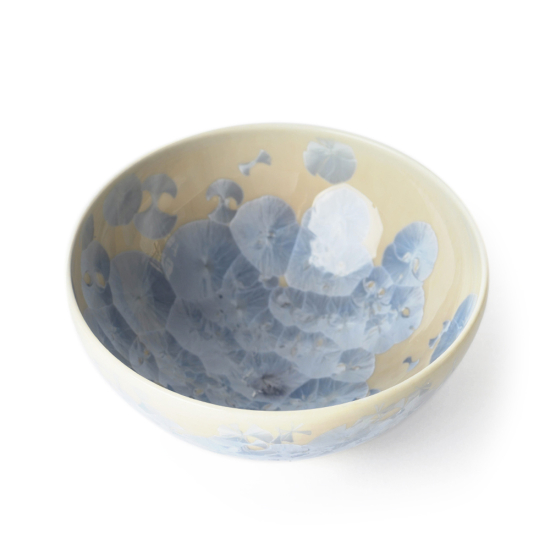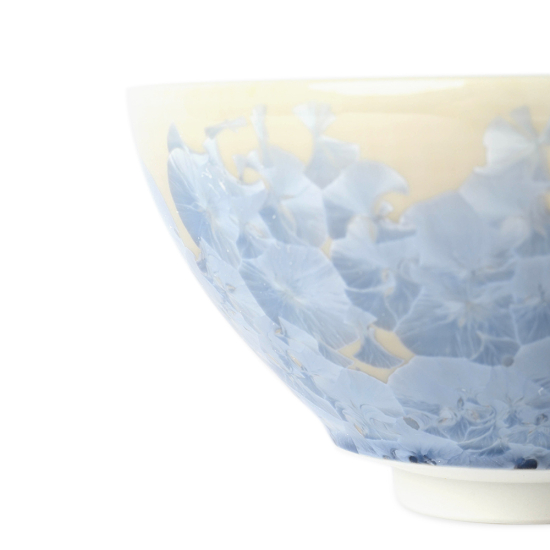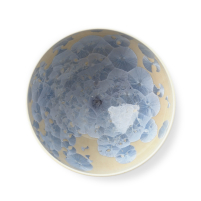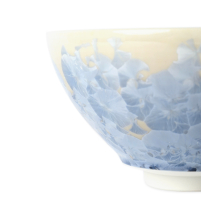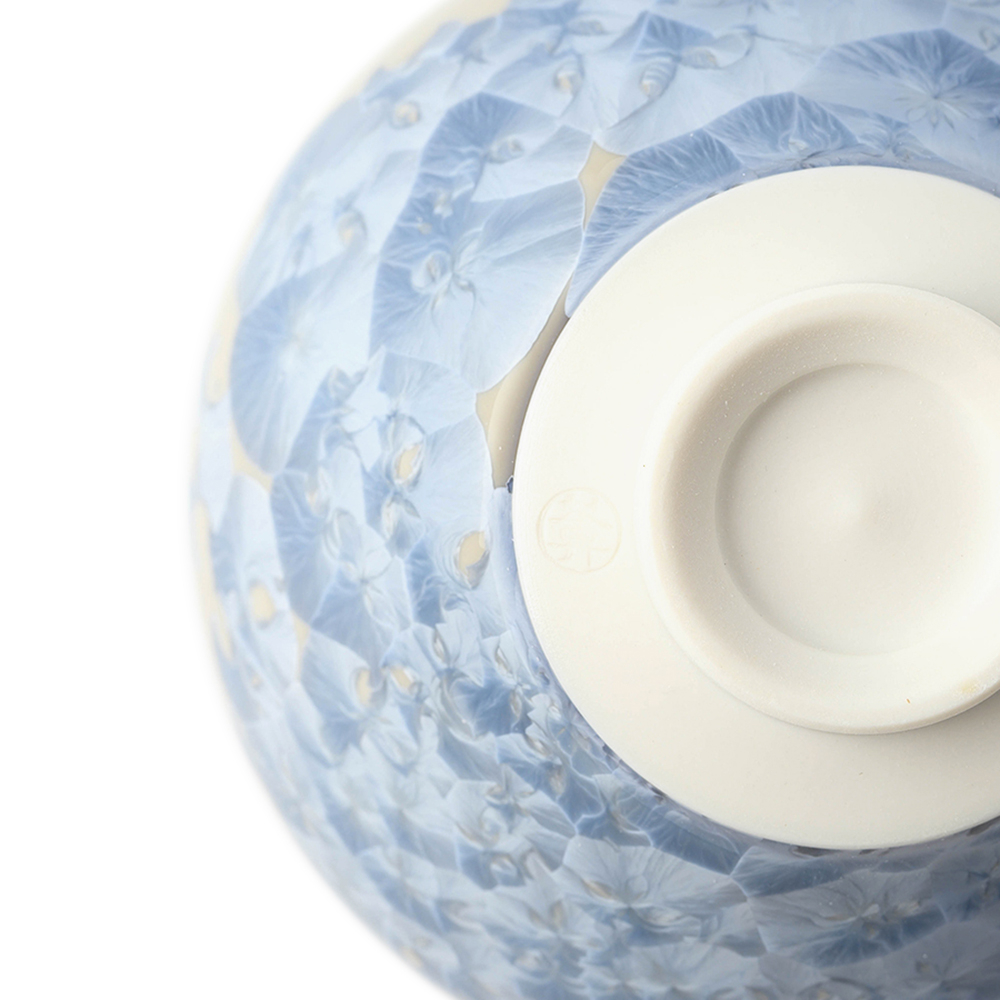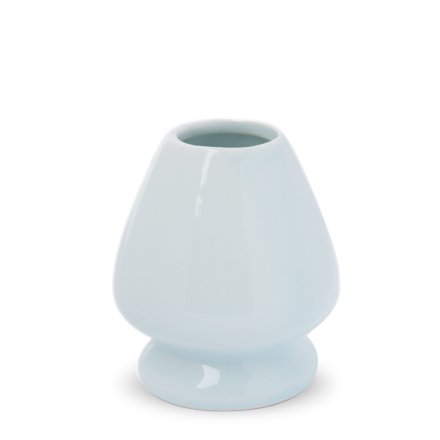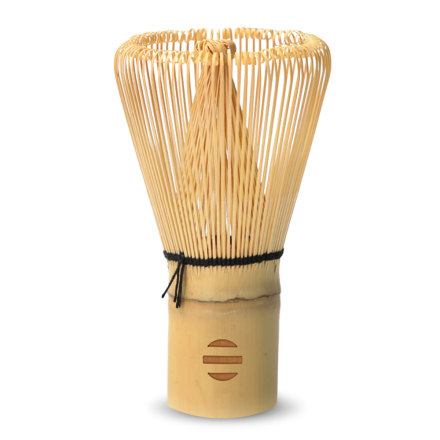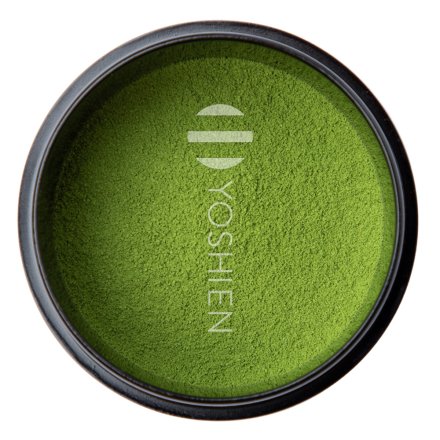Kyo- and Kiyomizu-yaki (清水焼), used together or interchangeably, refers to pottery produced in the Kyoto area, covering a variety of different styles. Historically Kiyomizu-yaki exclusively referred to pottery made on the road leading up to the ancient Kiyomizu Temple (now a UNESCO World Heritage site). From 794 to 1603 Kyoto was the imperial capital, attracting the most skilled artisans across the country. Even after the seat of government moved to Edo, present day Tokyo, Kyoto continued to be the cultural and spiritual centre of Japan. Typical Kyoto wares are decorated with colourful hand-painted motifs using overglaze enamel pigments: a technique that appeared in the 17th century and is still a hallmark of Kyo-yaki today.
Hanakessho 花結晶
Evoking sparkling flowers, lichen or barnacles, the signature Touan Hanakessho "flower crystal" glaze contains zinc oxide, which forms a mesmerising crystalline pattern as it melts and cools.



